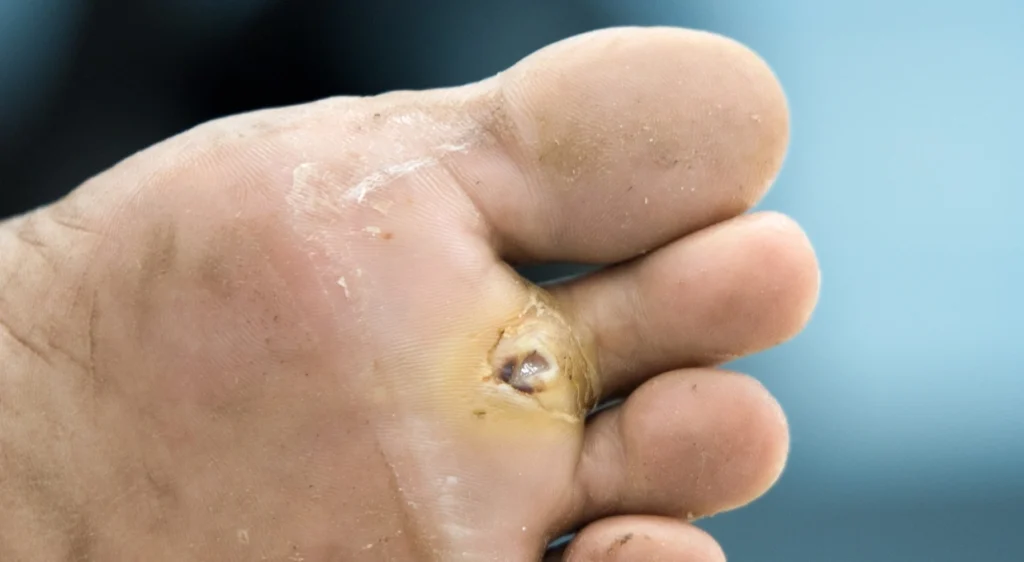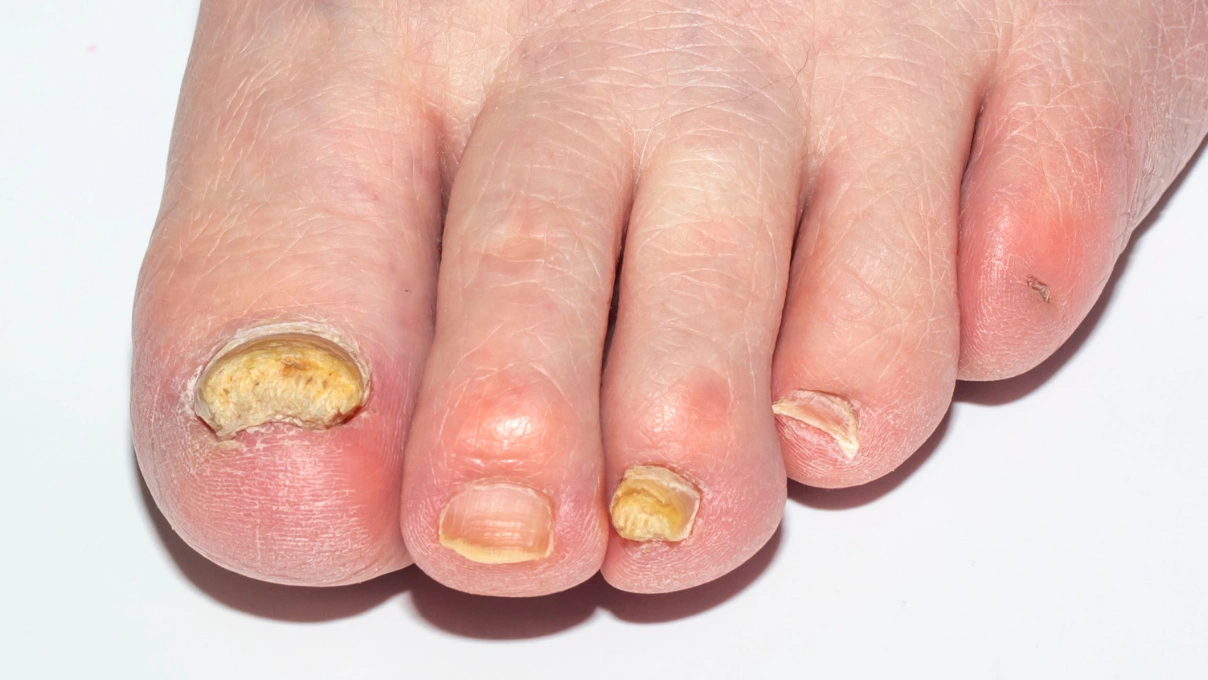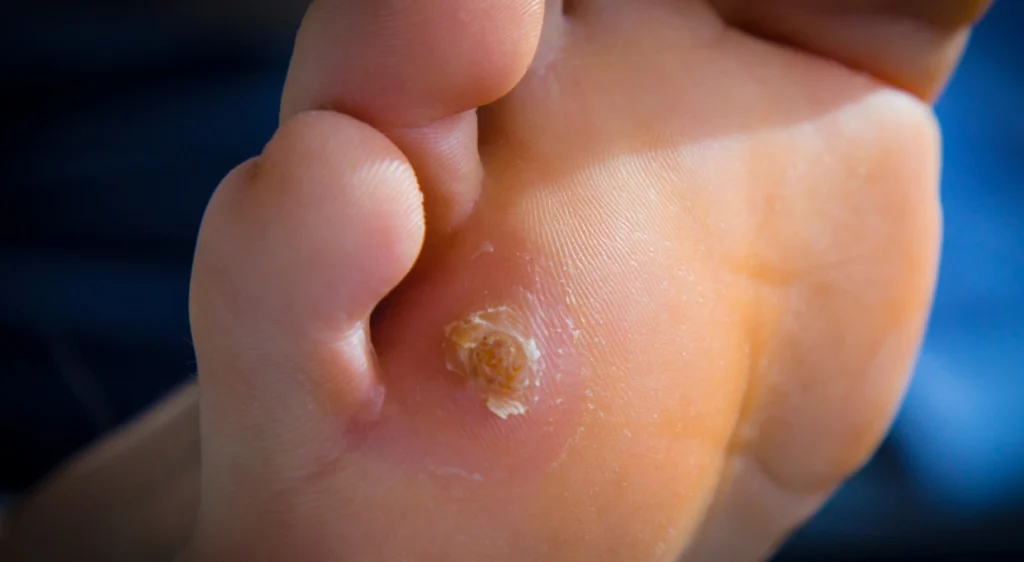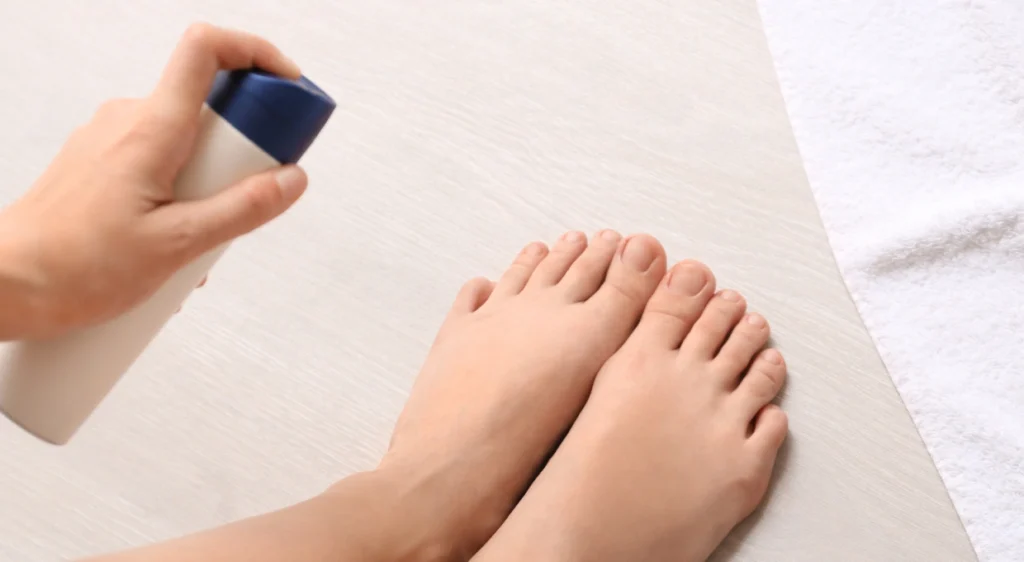Skin infections on the feet can range from mild irritations to serious conditions that require immediate medical attention. Detecting them early is crucial to prevent further complications. This article explores several types of common foot skin infections, their importance and how they can be identified and treated.
Common Types of Infections
Athlete’s Foot Athlete’s foot is a fungal infection that affects the skin between the toes and on the sole of the foot, causing itching, redness and cracking. It is highly contagious and spreads easily in moist environments. Onychomycosis Onychomycosis is a fungal infection that affects the toenails, causing thickening, discoloration and crumbling. It can be difficult to treat and can spread to other nails if not properly addressed. The infection can be caused by dermatophyte fungi, molds and yeasts. Dermatophyte infection Dermatophytes are fungi that affect the skin, hair and nails. On the feet, they can cause conditions such as athlete’s foot and onychomycosis. These infections often present with scaly, red, itchy areas. Paronychia Paronychia is an infection of the skin around the toenails. It can be caused by bacteria or fungi, and causes redness, swelling and pain around the nail. Paronychia can become a chronic infection if not treated properly. Cellulite Cellulitis is a bacterial infection of the skin that can cause redness, swelling and pain. If left untreated, it can spread rapidly and develop into a serious condition. Plantar Warts Caused by the human papillomavirus (HPV), these warts can be painful and difficult to treat. They usually appear on the soles of the feet and are often mistaken for corns.

Importance of Early Detection
Prevention of Complications Untreated infections can lead to severe complications, including the spread of infection to other parts of the body, abscesses and in extreme cases, the need for surgical interventions. Preventing Spread Detecting and treating infections early helps prevent the spread to others, especially in community settings such as gyms, swimming pools and locker rooms. Improving Quality of Life Early treatment reduces pain and discomfort, improving quality of life and allowing for faster and more effective recovery.
How to Detect Infections
Regular Inspection Check your feet regularly, looking for signs of redness, swelling, changes in skin or nail texture, and any areas that feel sore or itchy. Regular inspections can help you identify problems early. Maintaining Hygiene Wash and dry your feet well daily, and wear appropriate footwear and clean socks. Maintaining good hygiene is essential to prevent infections. Consult a Professional If you notice any signs of infection, consult a podiatrist immediately for proper diagnosis and treatment. A specialist’s opinion is crucial for effective treatment.
Common Treatments
Topical and Oral Antifungals Antifungals are the main treatment for infections such as athlete’s foot and onychomycosis. They can be applied directly to the affected skin or nails, or taken orally in more severe cases. Antibiotics For bacterial infections such as cellulitis and paronychia, antibiotics are necessary. They can be administered topically or orally, depending on the severity of the infection. Minor Surgery In cases of severe onychomycosis or chronic paronychia, a minor surgical procedure may be necessary to drain the abscess or remove the affected nail. Cryotherapy Cryotherapy, which involves freezing the plantar wart with liquid nitrogen, is a common treatment for plantar warts. Laser Laser treatment is an option for removing nail fungus and warts, providing an effective and less invasive alternative.
Conclusion
Early detection of skin infections in the feet is essential to prevent serious complications and maintain the health of your feet. At Clinica San Roman, we offer specialized diagnosis and treatment for a variety of podiatric conditions. If you suspect you have a foot infection, contact us today to schedule an appointment. Our team of experts is here to help you keep your feet in perfect condition.



